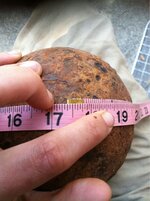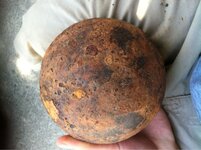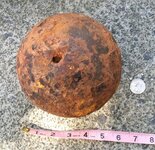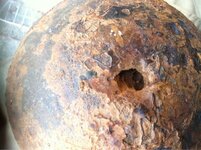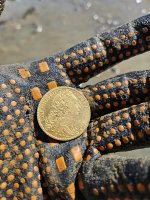mangum
Bronze Member
- Jul 2, 2012
- 2,319
- 3,525
- 🏆 Honorable Mentions:
- 1
- Detector(s) used
- AT Pro, MXT Pro Back-up
- Primary Interest:
- All Treasure Hunting
I found this a while back at one of my colonial sites. The guy who owned the plantation was a general in the revolution & had continental troops encamped on his property. This weighs about 60 lbs (although filled with dirt or something). It is roughly 17.25" in diameter. There is a hole in the top but it doesn't look like any fuse hole I've ever seen. This has been bugging me for years. So, is it a cannonball? A gate weight or what? I dont have calipers to get an exact measurement. Any help is greatly appreciated!


